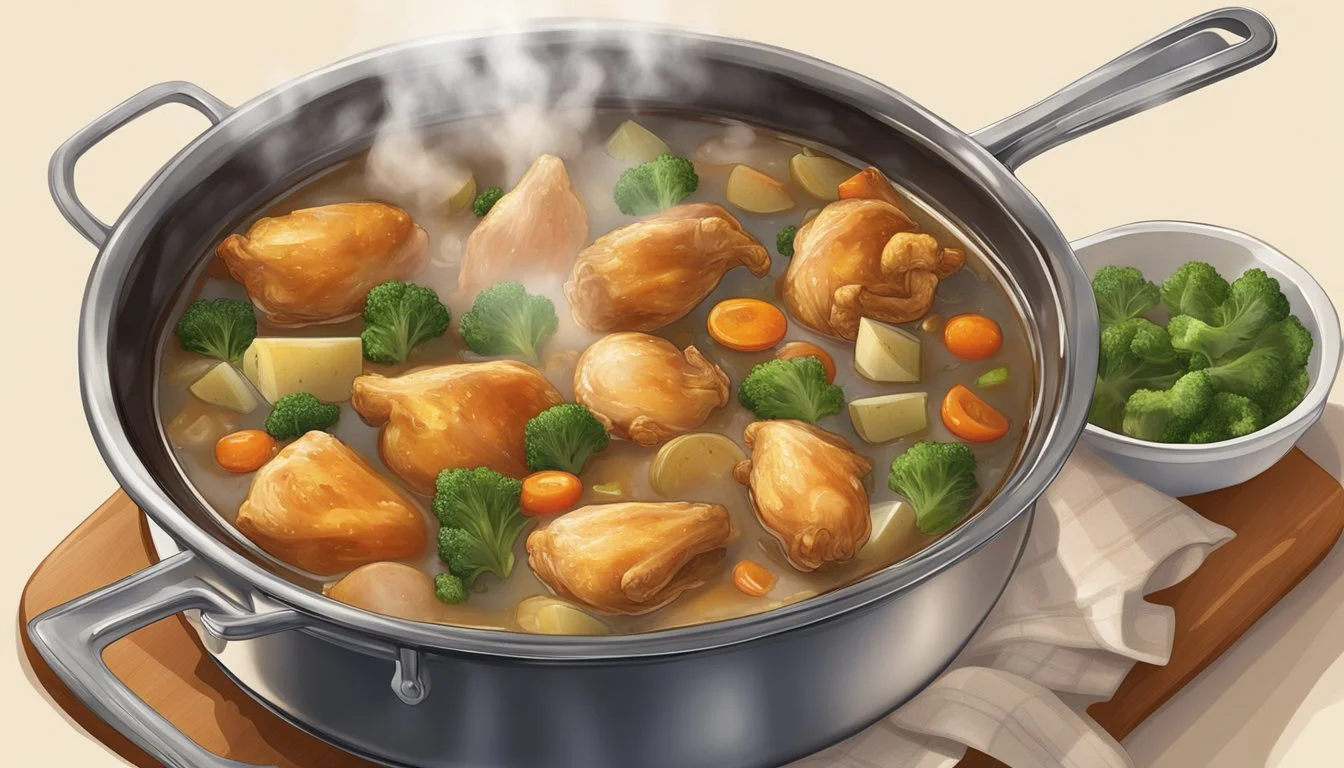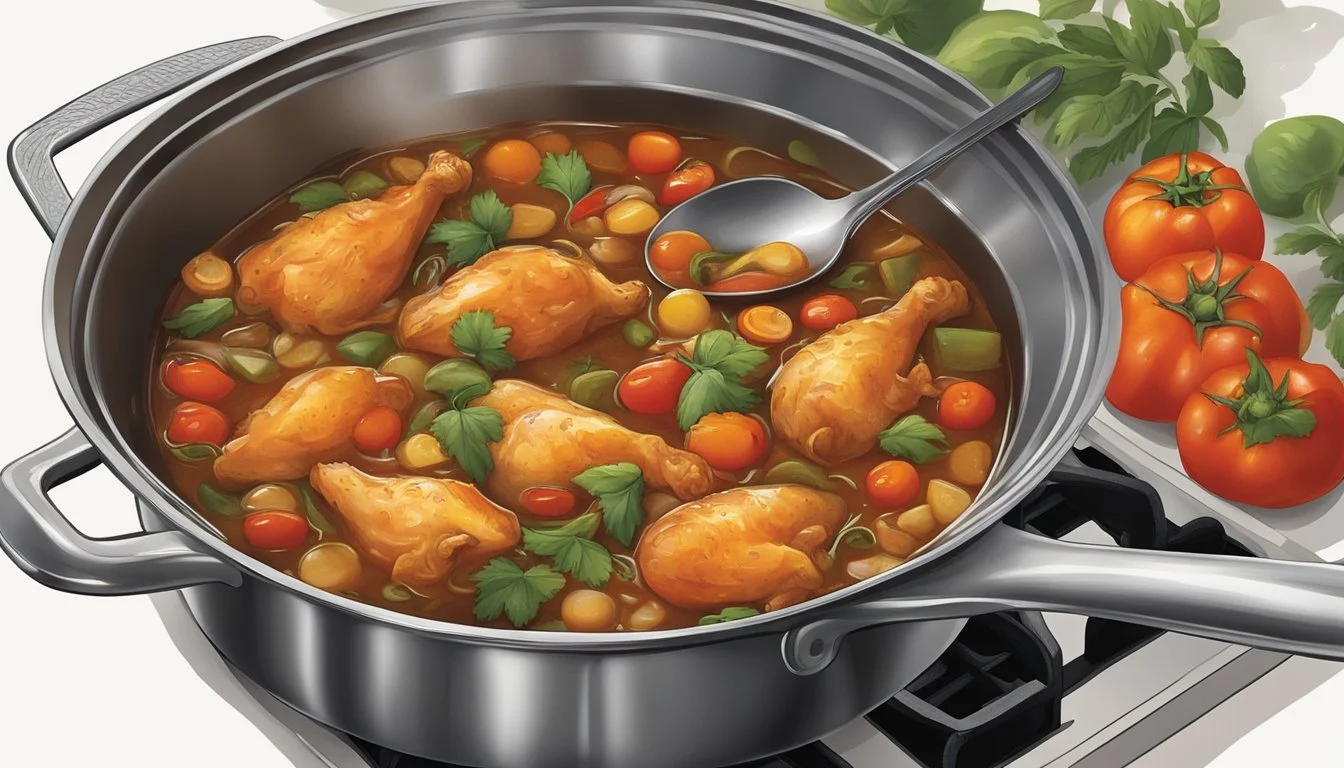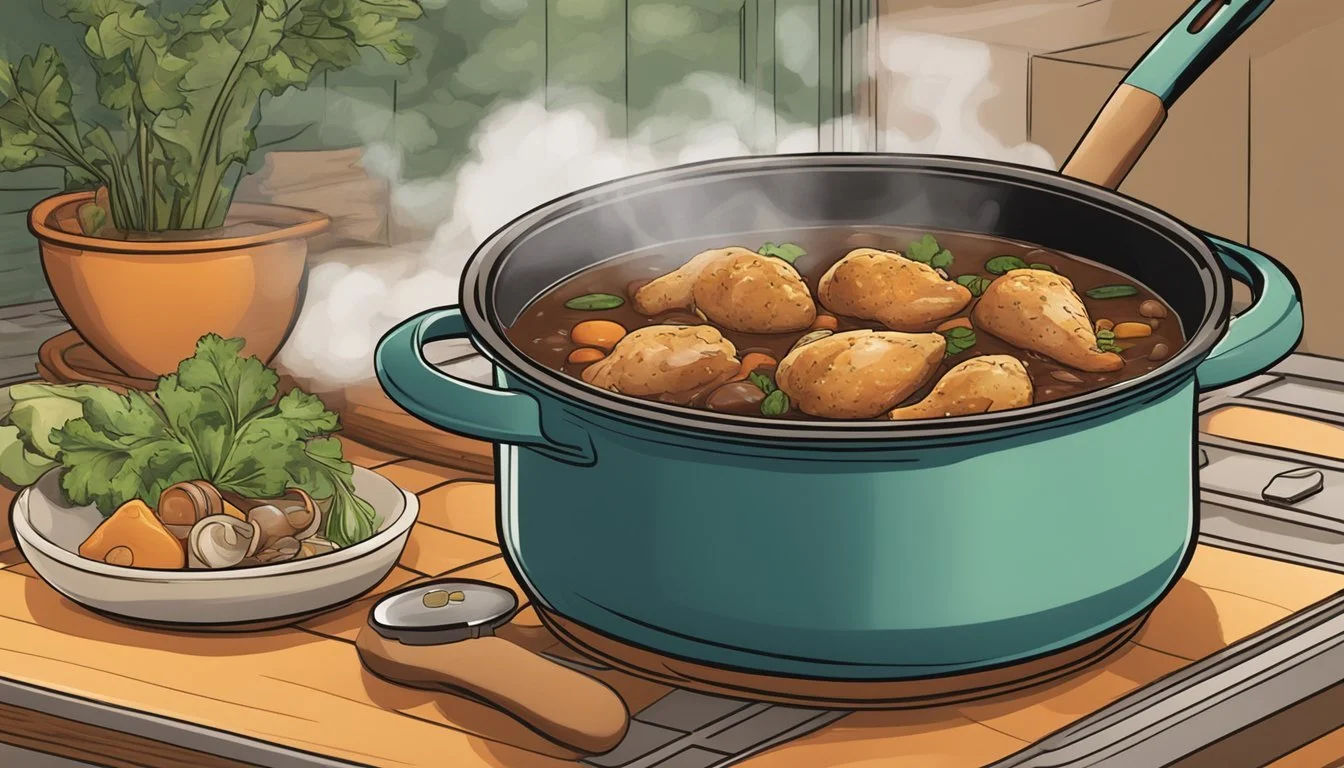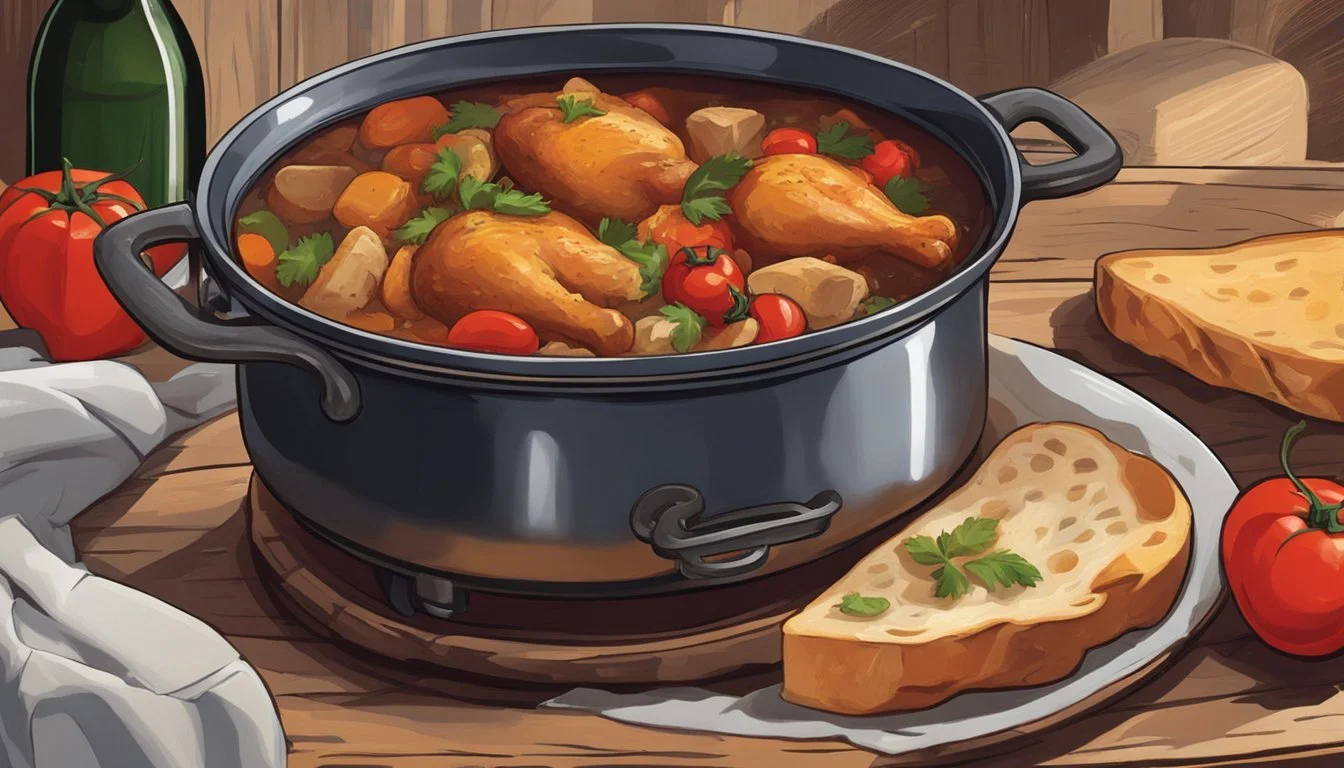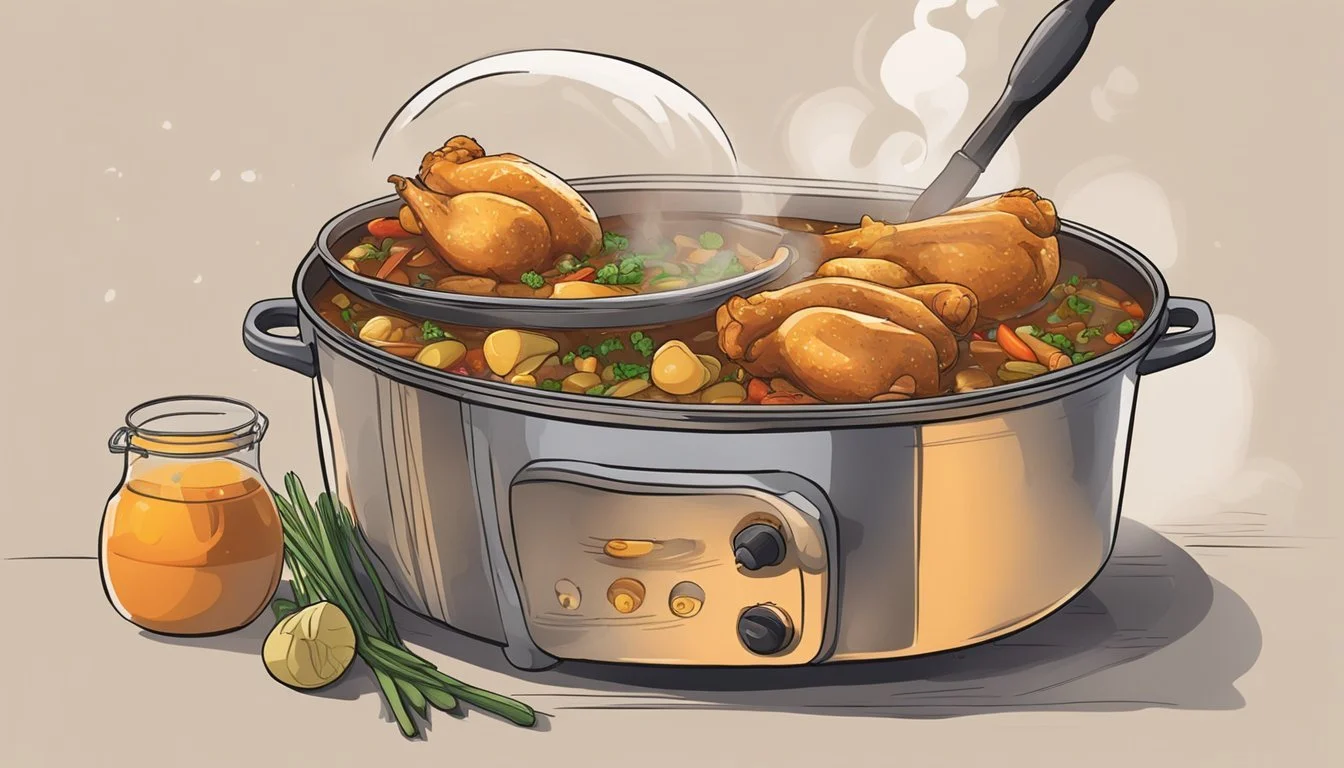Best Way to Reheat Basque Chicken Stew
Tips for Preserving Its Rich Flavor
Reheating Basque Chicken Stew requires a method that not only warms the dish thoroughly but also ensures that the harmonious blend of flavors unique to this regional specialty remain intact. The stew (What wine goes well with stews?), rich with ingredients like tomatoes, peppers, and a variety of herbs, develops a more complex flavor profile as it sits. To preserve the integrity of these flavors during reheating, careful consideration must be given to the technique used.
The ideal approach involves gently heating the stew over a low-medium heat on the stovetop, allowing for the gradual warming of the ingredients and a uniform heat distribution. This method helps maintain the tender texture of the chicken and the robustness of the stew's sauce. If time is a constraint, using a microwave with controlled power settings and heating in intervals can be an alternative, albeit with extra attention paid to stirring and the addition of a bit of liquid to prevent the stew from drying out.
Understanding Reheating Basics
When reheating Basque Chicken Stew, maintaining flavor and moisture while ensuring food safety is crucial. Proper temperature control and heating techniques play a pivotal role in achieving these goals.
Food Safety Considerations
Temperature: The critical factor that determines whether leftovers are safe to consume. Reheated dishes should reach an internal temperature of 165°F to effectively kill off any potential harmful bacteria. One should use a food thermometer to check the stew's temperature before serving.
Bacterial Growth: Leftovers offer an ideal environment for bacterial growth, especially between the temperatures of 40°F and 140°F, known as the "danger zone." To mitigate this risk, one must refrigerate the stew within two hours of cooking.
Effect of Heat on Food Texture and Moisture
Reheating affects the texture and moisture of food, key elements that contribute to the overall enjoyment of the dish.
Moisture Retention: To prevent the stew from drying out, cover the stew while reheating. This helps to retain moisture, which is especially important for a dish like Basque Chicken Stew that relies on its succulent sauce.
Heat Distribution: Gentle reheating over a low to medium heat allows the flavors of the stew to meld together without causing the ingredients to become tough or lose their integrity. Stirring periodically ensures even heat distribution.
Preparation Steps Before Reheating
Ensuring a flavorful and safe reheating process for Basque Chicken Stew starts with careful preparatory steps. These methods aim to maintain the stew's rich flavors while adhering to food safety guidelines.
Bringing Chicken Stew to Room Temperature
It's pivotal for the leftover chicken stew to gradually come to room temperature before reheating. This step allows for even heating throughout the dish, prevents cold spots where bacteria might thrive, and preserves the integrity of the ingredients. To do so, one should take the stew out of the refrigerator and leave it on the counter for approximately 30 minutes.
Proper Storage Techniques
Proper storage is the cornerstone of preserving Basque Chicken Stew’s quality. One should always refrigerate the stew within two hours of cooking to prevent bacterial growth. The following storage tips are essential:
Transfer the stew into airtight containers to shield it from absorbing other flavors in the refrigerator.
Make sure the containers are not completely filled; leave about half an inch at the top to allow for expansion.
If the stew is intended for freezing, omit thickening agents like flour or cornstarch until after it’s reheated, as these can separate when frozen.
Maintaining proper storage will not only ensure the stew's safety but also retain its depth of flavor upon reheating.
Reheating Methods
When reheating Basque Chicken Stew, the goal is to preserve its moisture and rich flavors. Each method has its unique benefits, and proper technique ensures a tasty result without drying out the ingredients.
Oven Reheating Method
The oven method allows for gentle and even reheating. Preheat the oven to 350°F (175°C). Transfer the stew into an oven-safe dish and cover it with a lid or foil to retain moisture. Heat it for 20-30 minutes, checking occasionally to ensure it doesn't dry out.
Stovetop Reheating Method
Reheating on the stovetop involves simmering the stew over low heat. Pour the stew into a pot and add a splash of broth if it appears dry. Stir occasionally, allowing it to heat slowly; this typically takes about 10 minutes for the stew to reach the desired temperature.
Microwave Reheating Method
For a quicker option, the microwave can be effective. Place a portion of the stew in a microwave-safe bowl, add a little broth or water, and cover it with a vented lid or microwave-safe wrap. Heat on medium-high in one-minute intervals, stirring between each interval to ensure even reheating.
Slow Cooker Reheating Method
Using a slow cooker is a convenient, hands-off method to reheat Basque Chicken Stew. Set the slow cooker on low and add the stew, allowing it to warm for 1-2 hours. Ensure the lid is secure to maintain moisture and prevent the stew from drying.
Techniques to Maintain Flavor and Texture
Reheating Basque Chicken Stew requires precision to ensure that the rich flavors remain intact and the texture of the ingredients is preserved. Here are some specific strategies to employ.
Adding Liquids to Preserve Moisture
To prevent the stew from drying out, adding a bit of liquid is crucial. One can incorporate a few tablespoons of water, chicken broth, or wine depending on the original recipe. This not only helps in maintaining moisture but also keeps the stew flavorful.
For Each Cup of Stew:
Water: 1-2 Tablespoons
Chicken Broth: 1-2 Tablespoons (enhances flavor)
Wine: 1 Tablespoon (to bolster original taste profiles)
Carefully mix the additional liquid into the stew to ensure even distribution.
Adjusting Temperature for Even Heating
Utilizing a method that promotes even heat distribution is essential for reheating chicken stew without compromising its texture. Here are some aspects to consider:
Temperature Control: Heat the stew gently over a low to medium temperature.
Use a Timer: Periodically check the stew to avoid overheating, using a timer as a reminder.
Meat Thermometer Use: Ensuring the chicken reaches an internal temperature of 165°F guarantees it's heated thoroughly yet stays tender.
By implementing these techniques, the Basque Chicken Stew can be brought back to a nearly fresh state, both in taste and texture.
Post-Reheating Tips
After reheating your Basque Chicken Stew, it's not just the heating process that counts but also the aftercare. This section delves into why resting your stew and checking the internal temperature ensure the perfect post-reheating experience.
Resting and Checking Internal Temp
When the Basque Chicken Stew has been reheated properly, it’s important for it to rest before serving. This allows the flavors to meld together and the heat to distribute evenly. Allow the stew to sit for a few minutes after reheating, ensuring that the heat settles and enhances the tenderness of the meat.
Checking the internal temperature of the chicken pieces within the stew is also crucial for food safety. The ideal internal temperature should be 165°F. Here’s a quick checklist to follow with a meat thermometer:
Insert the meat thermometer into the thickest piece of chicken.
Wait until it reads a stable temperature, ensuring it's not touching the bone or the bottom of the pot.
If the stew hasn’t reached 165°F, return it to heat for an additional brief period.
Remember, resting the stew not only contributes to food safety but also locks in moisture, ensuring the chicken maintains its tenderness.
Serving Suggestions
When serving Basque Chicken Stew, the choice of accompaniments can significantly enhance the dining experience. These side dishes should complement the rich flavors of the stew and offer a balance to the palate.
Accompaniments for Basque Chicken Stew
Rice: A classic pairing, steamed white rice serves as a blank canvas, allowing the flavors of the stew to stand out. It also helps in soaking up the delicious sauce.
Pasta: For a heartier complement, serve the stew over a bed of cooked pasta such as tagliatelle or pappardelle. The broad noodles capture the sauce and integrate the flavors well.
Bread: Crusty bread makes for an ideal accompaniment to Basque Chicken Stew. It is perfect for mopping up the hearty sauce, ensuring that none of the stew goes to waste.
Steamed Vegetables: Light steamed vegetables, like carrots or green beans, can add a touch of freshness and help cut through the richness of the dish.
Side Salad: A simple side salad with a vinaigrette dressing can bring a contrasting crispness and acidity, balancing the deep character of the stew.
Cilantro: Fresh cilantro can be used as a garnish, adding a burst of color and a hint of citrusy flavor to complete the dish.
Handling Leftovers
Properly managing leftovers is crucial to preserving the taste and safety of Basque Chicken Stew. One should pay attention to how they store and potentially freeze their stew to ensure its flavors remain rich and vibrant when reheated.
Storing and Freezing Post-Reheating
Storing leftovers: To refrigerate Basque Chicken Stew, one must:
Let the stew cool to room temperature within two hours.
Transfer the stew to shallow containers to expedite cooling.
Seal the containers with airtight lids before placing them in the refrigerator.
Freezing leftovers: For freezing, it's essential to:
Portion the stew into manageable sizes before it's frozen, which aids in both freezing and thawing processes.
Use freezer-safe bags or containers to prevent freezer burn.
Label the containers with the date to keep track of when they were stored.
Reheating stew: When reheating refrigerated stew:
Opt for gentle reheating methods such as on the stove over medium heat.
Stir the stew occasionally to ensure even heating.
The stew is ready when it has reached 165°F (74°C).
Reheat frozen stew: To reheat frozen stew:
Thaw it overnight in the refrigerator, if time permits.
For quick reheating, one can reheat it directly from frozen, using a lower heat setting and providing more time, always ensuring to stir occasionally for even heat distribution.

